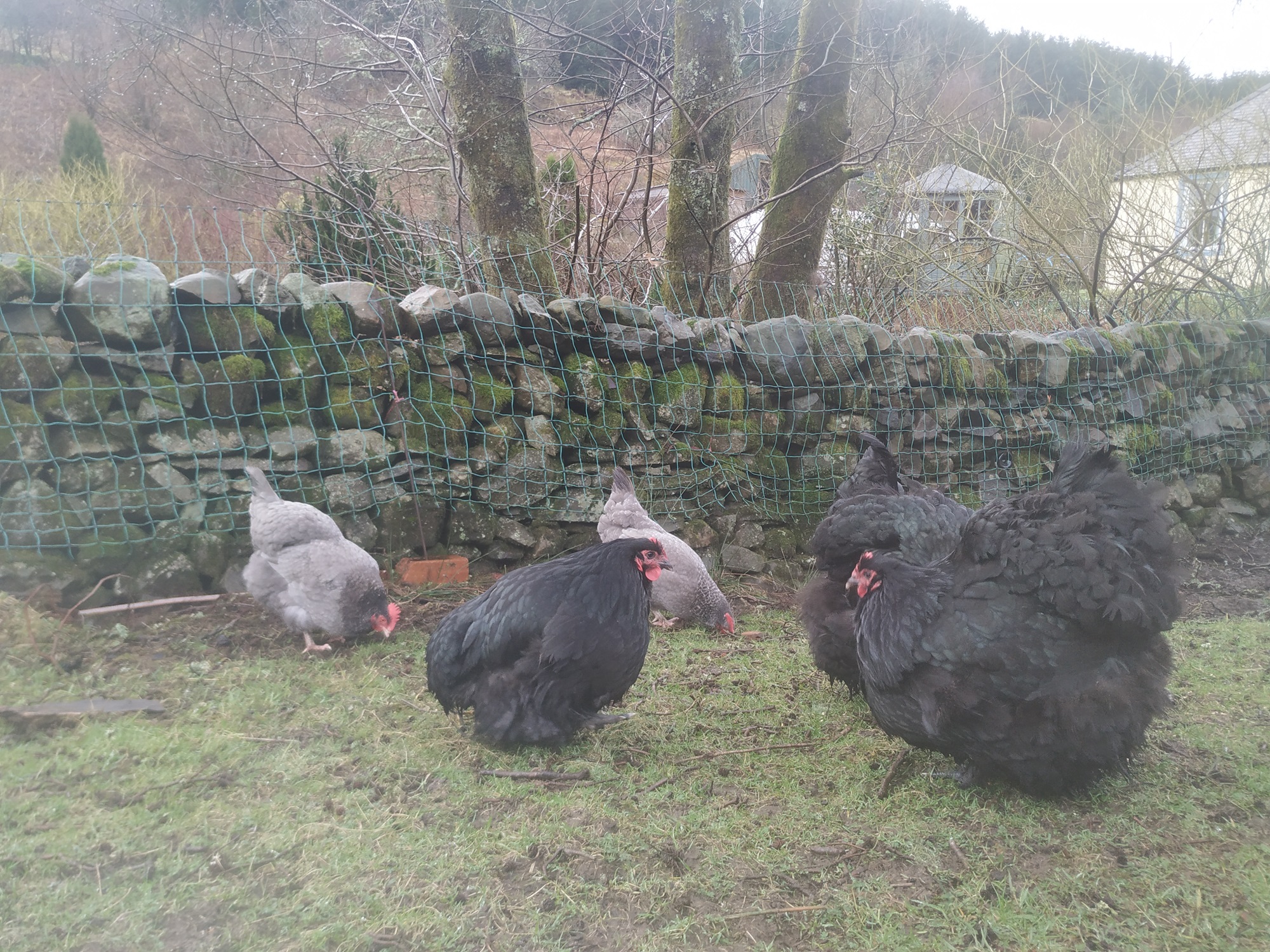

Belinda Bibble-Bott (Belinda for short) is one of our big, friendly Orpington hens who came to us as eggs back in the spring of 2022. We’ve seen Belinda and her siblings grow from tiny chicks the size of daisies into enormous hens almost twice the size and weight of our resident flock.
Last spring the Orpingtons started to lay their first eggs. This was a cause for celebration for us! The main reason we wanted to bring younger hens into the flock was because our resident ladies (bless their feathers, being on the elderly side) had all but stopped laying.

At first it took a while for the Orpingtons to work out what the nest boxes were for and quite often we would come across an egg lying in the grass. They also went through a phase of only wanting to lay in one particular nest box. This caused a few scuffles, kerfuffles and broken eggs. But gradually the new girls got the idea, egg production went up and we were able to bake cakes and make omelettes again, hoorah!
But, as is often the way in life, after an up there is a down. One morning in late April as I was scattering corn for the girls, I noticed Belinda’s walk looked ever so slightly off. There was the merest hint of a waddle about her, barely noticeable and could have been easy to dismiss because hens waddle at the best of times. But you learn to be a detective when you run a smallholding, monitoring the behaviour of animals on a daily basis, looking out for things that might be amiss. I didn’t have a good feeling about Belinda and my gut was saying ‘Egg Yolk Peritonitis’ (internal laying). I hoped I was wrong but I had a sinking feeling as I picked her up and checked her over. However, she didn’t have the swelling that hens get with EYP and there was no heat which would have indicated infection, but something still felt off.
I had a think and decided to take her indoors and sit her in a bucket of warm water on the off chance that she was egg-bound. Sometimes first time layers can lay very large eggs which can get stuck and cause discomfort. I handled her carefully as if there was an egg stuck inside her, I didn’t want to break it as this would be fatal. After sitting her ever so gently in a bucket of warm water for 15 mins, I gave her a blow dry and popped her in a darkened cardboard box with plenty of cosy bedding. I had a cup of tea and half an hour or so went by when suddenly I heard a loud ‘post egg cluck’ coming from the cardboard box, Belinda had laid an egg!
My happiness was short lived however. The following day Belinda’s walk was still off. After some thought I decided to go to the vets and get some antibiotics to cover all bases. If she did have EYP there was a chance it could be halted in its tracks if the infection was caught early enough. However it was a slim chance and would only work if the internal laying was a one off.

Off to the vets I whizzed and came back armed with needles and antibiotic. So as not to cause Belinda any discomfort we decided to treat her at night. Hens have a funny way of giving you the eye when you administer injections so I hunted out the little ‘hen hood’ we keep for moments like this. At dusk, we scooped her out of the hen house, placed the hood over her head and popped the needle in.
During that week we gave Belinda her course of antibiotics and kept our fingers crossed. We closely monitored her laying, (a) to see if she was laying eggs on a daily basis which would be a good sign, and (b) to discard any of her eggs because they would contain traces of antibiotic. It broke my heart to throw away her precious eggs but thankfully it would only be for a short period of time.
Sadly Belinda didn’t respond to the antibiotics and over the following weeks her abdomen started to show the tell-tale signs of EYP, it became red and swollen. At this point we made the decision to step back and not give her more antibiotics or go down the hormonal implant route which some vets recommend. Rather we would keep her comfortable and let her live out her life with the other hens without invasive medical procedures.

Belinda surprised us all, she lived through the summer and is still going strong. She’s a spirited lady and despite her condition, is by far not the lowest hen in the pecking order. Usually the smallest or weakest hens get bullied by the hens further up the pecking order, but not Belinda.
During the winter when the hens stopped laying, Belinda’s condition improved slightly but sadly didn’t clear up. Her swelling went down but she still waddled and maintained her ‘penguin stance’. This upright posture has an unfortunate side affect. Orpingtons have extremely long, fluffy feathers and as we came into winter we noticed Belinda’s feathery ‘skirt’ was dragging on the ground and getting wet in all the puddles. So to keep her comfortable and prevent her from catching a chill we decided to give her a wee hair cut.

We brought her into the kitchen and made her comfy on Adrian’s lap while I got to work with the scissors. Belinda relaxed right into the salon experience. So much so that as I worked on her tail feathers she couldn’t help herself and did some reciprocal grooming on Adrian’s arm.
As we come into spring and the hens come into lay again we’ll continue to keep an eye on Belinda, keep her feathers trim and do as much as we can to keep her comfortable.





